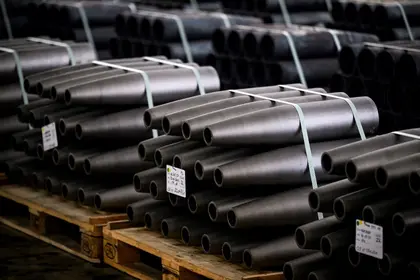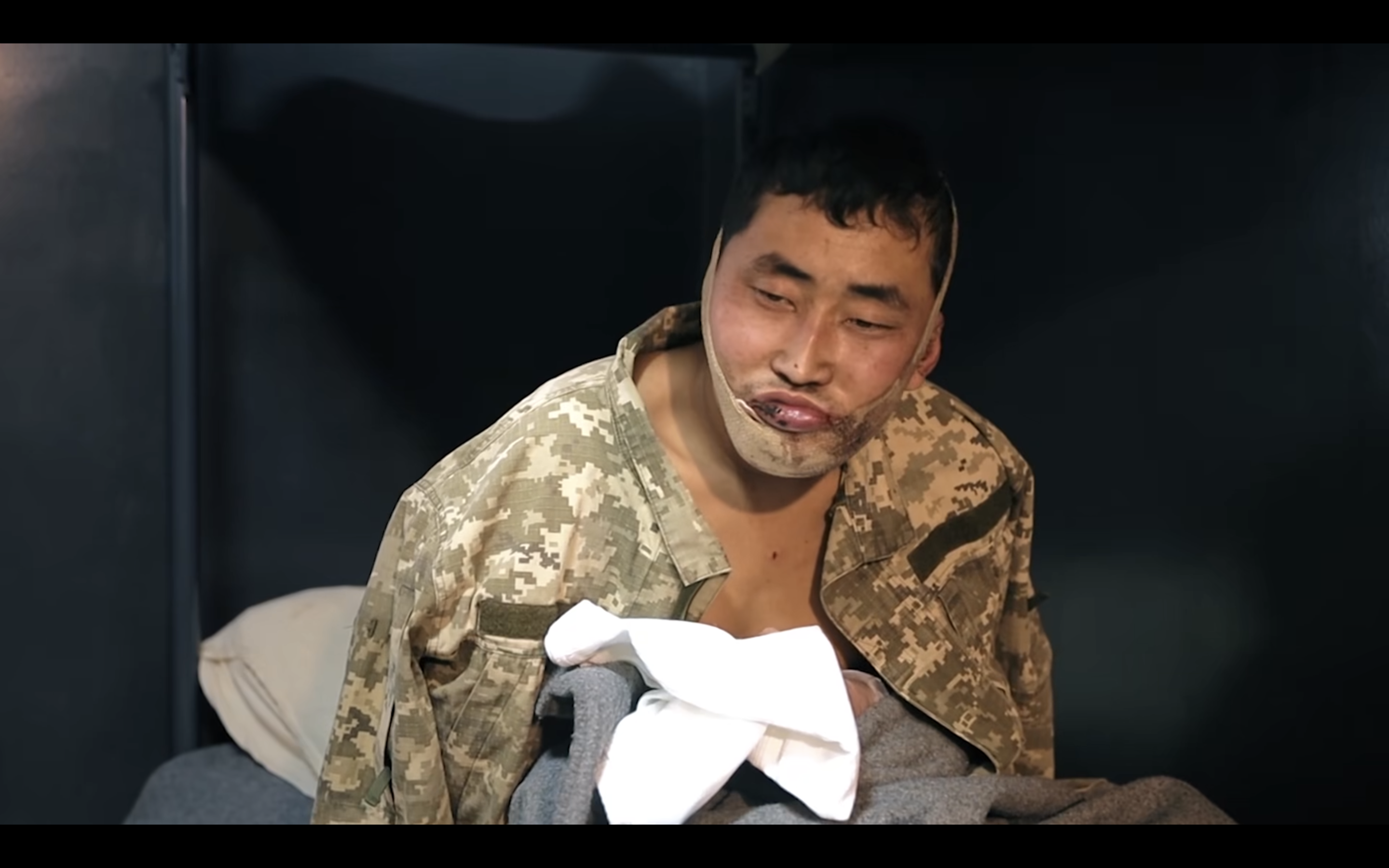Ammunition shortages during a war is not a new problem. Throughout history armies have been guilty of using the lessons from previous conflicts to prepare for the next. In terms of ammunition, they have constantly underestimated how much was needed and how quickly it would be used in the next war.
Ammunition usage in the World Wars
JOIN US ON TELEGRAM
Follow our coverage of the war on the @Kyivpost_official.
A lack of shells for British artillery in the first year of WWI resulted in the downfall of the government. The shortage of ammunition in the spring of 1915 was so acute, that artillery on the front line was rationed to seven shells a day. More than a year before conscription was considered necessary to reinforce the army, industry was mobilized under a new Ministry of Munitions to provide the ammunition that was needed on the front.
- Obtain the most contemporary war in ukraine update from the Kyiv Post’s news reports today.
- Get the freshest Ukraine news updates as of today.
The relatively simple weapons of WWII enabled the protagonists of the two world wars to sustain their efforts and produce the quantities of ammunition needed to fight a global war, particularly once the vast industrial resources of the United States were switched onto a war footing.
The costs of the war had been horrendous and, undoubtedly, part of the reasoning for the formation of NATO in April 1949 was not only to ensure peace and collective security, but also to share the burden of costs for maintaining defense forces against the perceived Soviet threat.
During the period between the formation of NATO until the mid 1960s, ammunition planning within the Alliance was based on a 60-day conflict; an initial “intense” 30 days followed by 30 days of “sustained” usage. However, the costs of maintaining the stockpiles necessary for this were starting to become prohibitive for many of its European members, particularly as newer, smarter and more costly munitions were being taken into inventories. The 60-day war was soon replaced by a 30-day, 15/15 concept.

Trump Comments Calling for Kremlin Concessions Ignites Firestorm of Russian Objections
The strategy NATO now employed was known as the “trip-wire strategy,” the idea being that the Alliance would only have to fight long enough to bring the Soviets to the negotiating table or resort to the use of nuclear weapons. Every UK and NATO military exercise during the period culminated in a simulated nuclear explosion – which telegraphed its plans to its own people as well as those on the other side of the Inner German Border (IGB) between what was East Germany and West Germany.
The Battle Attrition Study (BAS) and Review of Ammunition Rates and Scales (RARS)
Forty years ago this month, as the Ammunition Technical Officer (ATO) responsible for the UK’s Berlin Infantry Brigade ammunition stocks in what was then West Berlin, I had inherited a problem that was about to become infinitely worse.
While about a quarter of our ammunition was directly held by the units that formed the Brigade, the bulk of our ammunition was held in the Ruhleben ammunition depot, which I commanded, as it had been since the Brigade was formed in 1953. However, the depot was about to “bulk out” as, in the preceding 30 years, new weapons systems were introduced and the order of battle (ORBAT) of the Brigade changed.
One April morning, I received a classified document from my headquarters headed: “Battle Attrition Study (BAS) – Review of Ammunition Rates and Scales (RARS) Stage 2 – Berlin War Reserve.”
The bottom line was that the UK was not meeting the ability to support the NATO 30-days war-fighting concept. The BAS/RARS study showed that in a war with the Soviet Union, UK stocks worldwide would be exhausted in just over a week, which in effect meant that the UK’s stocks were around 25 percent of what was actually needed. (The situation was even worse with anti-aircraft missiles.)
In Berlin, where we were preparing for FIBUA (fighting in built-up areas) and had built a training complex to practice it adjacent to my depot, the study showed that we needed to hold 6 times as many anti-tank mines, 8 times the tank and anti-aircraft ammunition, and 14 times the small arms ammunition and hand grenades that we held at that time.
The problem was not only where were we going to put all this stuff, but who was going to make it.
The build-up of ammunition capacity
Similar studies elsewhere, including in the US, led to a build-up of capacity to meet the new realities exemplified by BAS/RARS.
This was given new impetus as the Chief of the Defense Staffs advised the Government that, “BAOR (the British Army of the Rhine) did not have the capability to sustain conventional warfare in the Central Region for more than four days…”
Some in the UK and other governments tried to dismiss the figures as “empire building” on the part of the armed forces but the spirit if not the letter of the BAS/RARS figures were largely borne out or, in reality, exceeded during the Falklands Islands campaign in 1982. The ammunition expenditure rates in the 10-week low-intensity land battle exceeded even those assumed in the studies.
It was estimated at the time that the UK faced a £1.2 billion deficit in its stockpile requirements, at 1980 prices, and that it would take a decade to rectify the shortfall.
For Britain, this included the need to build both new facilities for ammunition manufacturers, such as the government-owned Royal Ordnance Factories (ROF) and 28 either new or refurbished ammunition storage facilities on mainland UK and more than a dozen within the British zones within Germany. At the time, ROF, which was privatized in 1985, had 16 factories, many of which went on to double shift production to meet the UK’s needs.
The peace dividend
The fall of the Berlin Wall in November 1989 was, most analysts and commentators at the time, interpreted as an end to the Cold War and the divisions that dated back to the Second World War.
They saw the break-up of the Communist bloc as the end of the bipolar world that had resulted from the rivalry between the United States and the Soviet Union. The Soviet-led Council for Mutual Economic Assistance (COMECON) and Warsaw Pact dissolved in 1991.
This led the US and other Western leaders to significantly cut military spending and talk about the “peace dividend” in terms of the economic benefits that were now possible because of a decrease in defense spending: “the guns versus butter” argument.
In an ironic demonstration of “Murphy’s Law,” suddenly all the additional ammunition stocks were no longer considered essential. By 2007 the majority of the ROF’s ammunition manufacturing capability was lost with the closure of all but four of its factories. In the US dozens of defense contractors closed, many bankrupted by the peace dividend, and overall lost almost a third of its military arms production capacity.
The shockwave of the Ukraine war
The February 2022 invasion of Ukraine may have caused political astonishment but, once it had occurred, not only Russian President Vladimir Putin but most Western analysts expected it to only last a number of weeks, ending with a Ukrainian defeat. The initial successful resistance by Kyiv and its continued progress, albeit with large-scale Western military, financial and humanitarian support has, to some extent, taken everyone by surprise.
That shouldn’t have been such a shock as the lack of ammunition stocks was highlighted as far back as July 2021 when Lt. Gen. Ben Hodges, the former commander of United States Army in Europe, told MPs that in a computerized simulation “Warfighter exercise” the “entire British Army inventory” was exhausted and “every bit of important ammunition was expended” before the 10-day exercise finished.
In Ukraine the intensity of the fighting in terms of ammunition expenditure has caught both Russia and the West off guard. None of the military planners on either side could have expected the war to go on for as long and at the levels that have been experienced in all areas of the fighting.
Sadly, Ukraine’s partners are just waking up to the fact that the amount of all types of artillery, tank, air defense, anti-tank and small arms ammunition needed to conduct this war exceed even those predicted in the 1980s.
This realization is not only that they need to increase production to meet the needs of Ukraine in this current war, but also for the future.
Mark Cancian, a senior advisor at the Center for Strategic and International Studies, says that in terms of 155mm artillery shells, for instance, Ukraine has been firing “in one month what the United States produces in an entire year.”
So, as Ukraine calls for the need for more ammunition from its partners, it is not that the resources that are needed are being deliberately withheld; rather, it is that they currently don’t have them.
Cancian says that the war in Ukraine shows that neither the US nor any NATO countries are ready to fight a war with Russia or China. NATO countries have reduced their holdings of all types of ammunition because in Cancian’s view it just isn’t glamorous to buy.
“If you buy an aircraft, a tank, you can see it out there for 20 or 30 years. It provides obvious deterrence. It provides obvious military capability,” he says. “You buy ammunition, you just put it into a bunker, and it sits there for decades.”
In its defense, the US Army says it realized the problem five years ago and in 2019 launched the so-called Organic Industrial Base (OIB) Modernization Implementation Plan, which aimed to modernize critical facilities and capabilities in 23 depots, arsenals and ammunition plants. This was intended to be a 15-year program, but the experience of Ukraine has put even more momentum behind it.
In two years, the Pentagon aims to boost production of 155mm artillery shells at levels six times higher than its current 20,000 a month with similar improvements in the production of Javelin anti-tank missiles and launchers, HIMARS missiles, and other essential weapons.
It is to be hoped that with those improvements and the EU’s promise to provide Ukraine with a million rounds of ammunition within the next 12 months, Ukraine can hold off long enough to benefit from them.
The views expressed in this opinion article are the author’s and not necessarily those of Kyiv Post.
You can also highlight the text and press Ctrl + Enter










